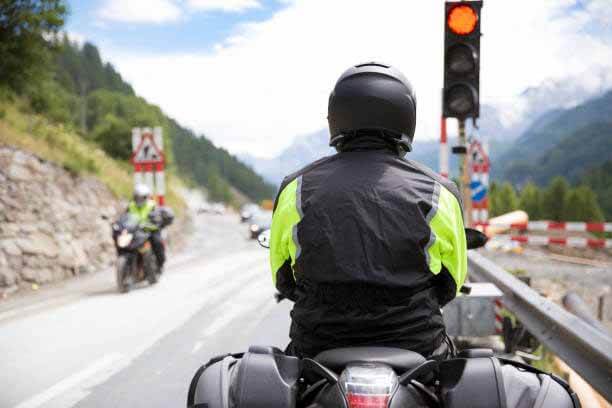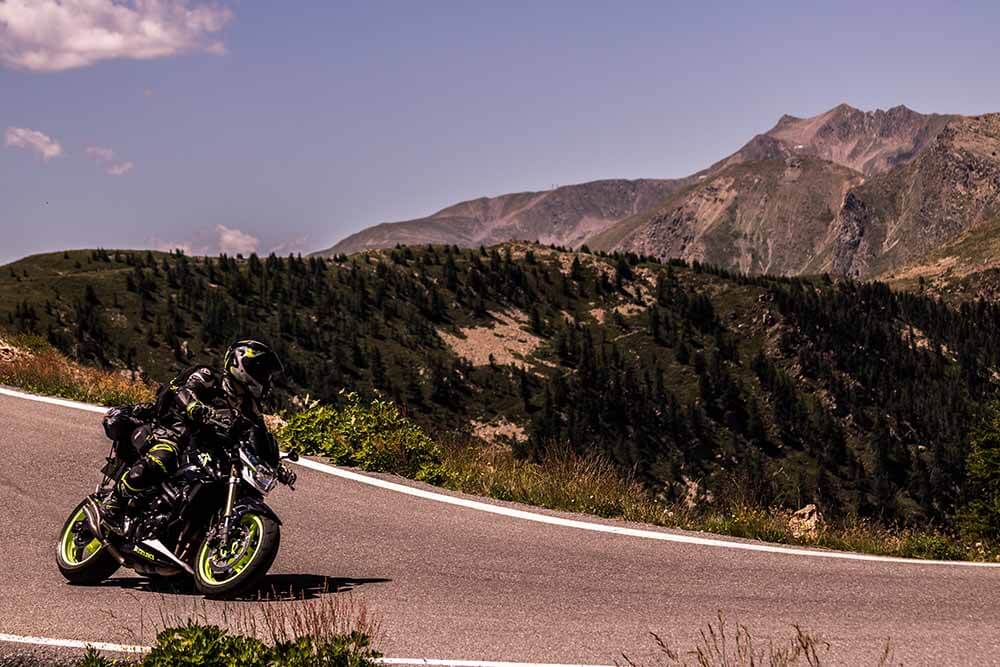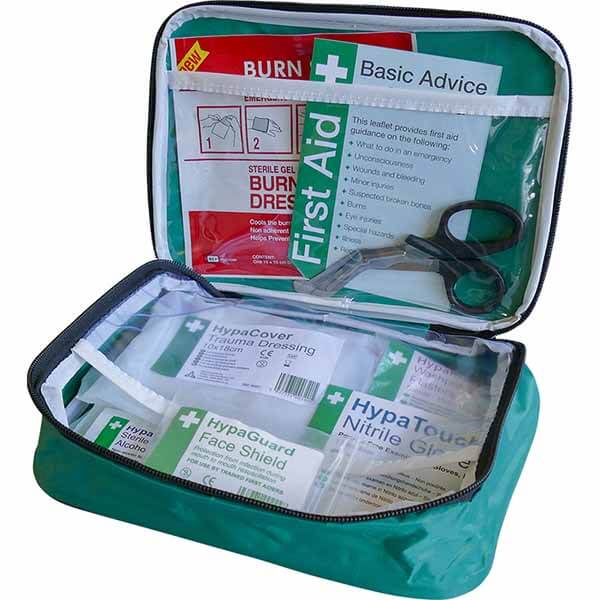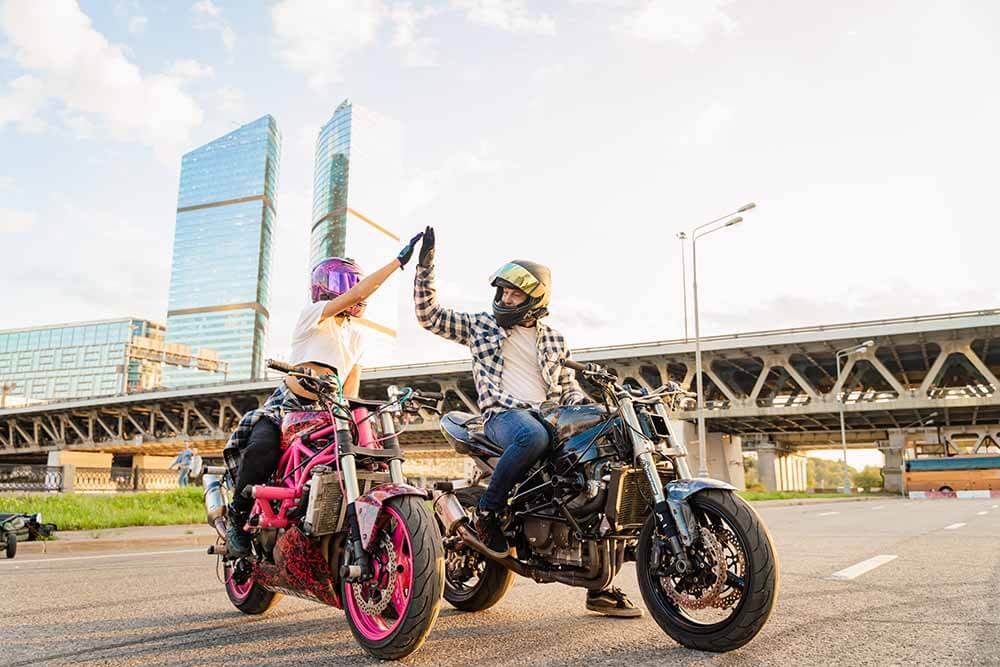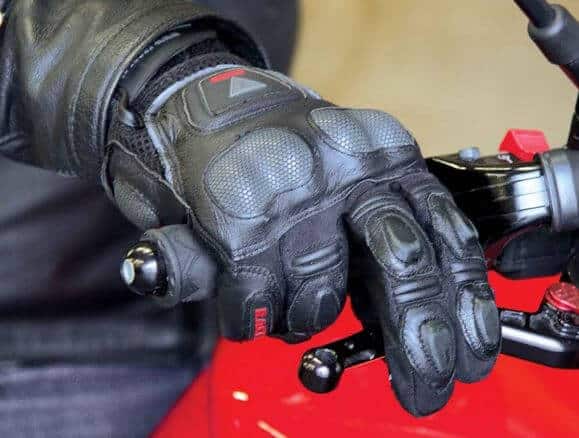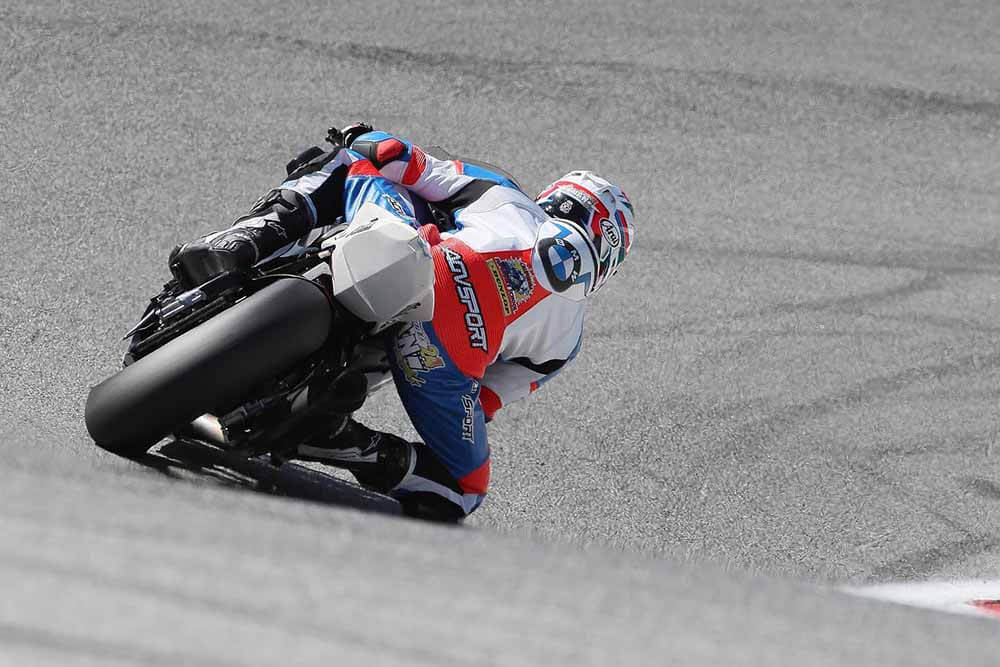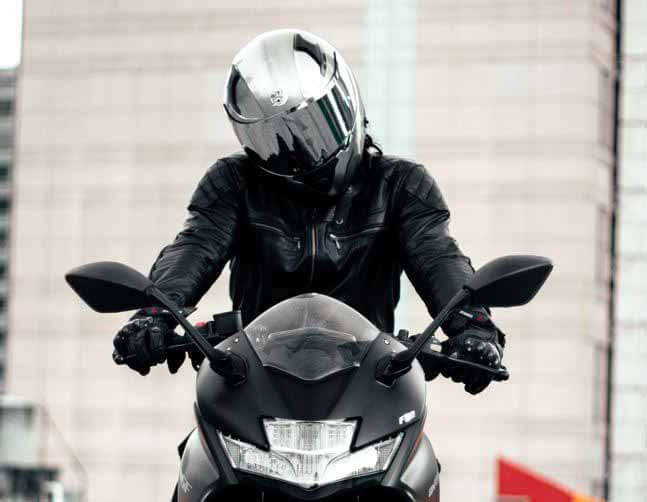Motorcycle Riding Tips and Tricks Relating to Safety
First and foremost, on your mind when riding should be safety. Here are some tips and tricks that will help to keep you safe on the road:
1. Take a Safety Course
If you’re new to motorcycling or even if you’ve been around a while, the skills taught at most safety courses make them a worthy investment. For new riders, the courses teach the rules of the road, but for motorcyclists of all skill levels, they teach the best way to react in an unpredictable situation.
2. Check the Weather
Before you head out on your motorcycle, check the weather. If the weather’s not looking promising, especially if heavy rain or snow is forecast, don’t be afraid to put your ride off until another day.
3. Wear Motorcycle Gear
Every time you head out, wear appropriate motorcycle gear. Whether you plan to be out for five minutes or five hours, it doesn’t matter. It only takes a second for an accident to happen and a five-second ride has 300 seconds. This includes riding gear to make you visible
4. Inspect Your Bike
Try to always give your motorcycle the once over before you go out on it. This doesn’t have to take forever. Most people can inspect their bikes in under five minutes, and it means you’re less likely to encounter problems or get stranded in the middle of nowhere.
5. Obey Traffic Rules
Although it goes without saying, it’s important to always obey the rules of the road. This means indicating appropriately and following the right of way rules. This also means adhering to the posted speed limit, maintaining a safe following distance, and watching for hazards, which can occur at any time but can create major issues for motorcyclists.
6. Carry a First Aid Kit
Having a first aid kit on your bike is never silly. Keep in it disinfecting wipes, hand sanitizer, adhesive tape, bandages, band-aids, and gauze.
7. Take an Advanced Riding Course
An advanced riding course is money well-spent. It builds on your basic skills and teaches you control and braking techniques, advanced turning, and collision avoidance maneuvers.
The Wisdom That Comes with Experience
Experience is something that’s often overlooked, but experience builds wisdom that doesn’t come from reading a book or watching a video. Here are some pearls of wisdom from experienced riders:
1. You’re Usually Not as Good as You Think
Unfortunately, when it comes to riding most of us are not as good as we think. It’s great to have confidence in your riding ability, but it’s a fine line between that and being too confident, which can lead to overestimating your ability and coming off the worse for wear. It’s always better to ride within yourself than beyond yourself.
2. Try an Off-Road or Track Course
Even those that are adamant they’re only riding on the road and don’t plan to leave it will enjoy one of these courses. Not only are they fun, but they will teach you some excellent new skills. Most courses cater to all skill levels and riding styles. What you learn on these courses will help improve your on-road riding skills.
3. Practice Low-Speed Maneuvers
The most common scenario for dropping your bike is during a low-speed maneuver. Practicing low-speed maneuvers will help avoid this scenario. When you practice focus on balancing your throttle, clutch, and the rear brake. Also, practice your U-turns and figure-eight turns to improve your confidence.
4. Invisibility Cloak
Remember that for all intent and purpose, you are invisible. This is because cars often do not see motorcyclists, simply because they aren’t looking. Most car drivers are looking for things that are a lot bigger than the motorcyclist so they can miss them altogether. Motorcyclists need to be aware of this and prepared to take evasive action if necessary.
5. Small bikes are Fun
Big bikes aren’t necessarily the best. Small bikes can be a lot of fun and they’re cheaper to run and lighter to get around on. A big bike can be difficult to maneuver, especially in traffic. They can also be expensive to maintain when compared to a smaller bike. When it comes time to choose your bike, don’t write off the little guy (bike).
6. Practice Your Riding
I know you’re thinking, but I’m practicing every time I ride. This is true, but when regularly riding it’s easy to fall into bad habits. Once a month go out with the sole intention of doing everything right. From holding your position on the bike, ensuring you monitor for hazards, check your mirrors, and ask yourself if you’re making the right decision. You could head out with a buddy and assess each other’s riding.
7. Provide a Running Commentary
A good way to maintain concentration while riding and learn as you ride is by providing yourself with a running commentary as you ride. The idea behind a running commentary is it slows you down and makes you concentrate on what you are doing rather than be distracted by something that is irrelevant.
8. Everything is Your Fault
Always ride as if anything is your fault, even if it’s not. The idea is to ride like you influence everything. This means anticipating spaces and being on constant alert.
9. It’s Not Always About the Speed
Not every ride has to be completed at top speed. It costs you more in fuel, it’s more dangerous, and it’s tiring. Slow down, chill out a bit, and take the time to enjoy the scenery.
10. Nobody is Impressed
You may think everyone is watching you, but the truth is people who don’t ride bikes don’t even notice you. Revving your bike or pulling wheelies doesn’t impress anyone. A good rider doesn’t do this as they place the rider and others on the road in danger.
11. No Hating on the Cars
Contrary to some riders’ beliefs, car drivers aren’t out to get motorcyclists. There are a lot more of them than there are motorcyclists, so it’s important to learn to share the road with them. Sometimes despite their best efforts, car drivers make mistakes around motorcyclists. The primary reason for accidents between cars and motorcyclists is the car driver doesn’t see the motorcyclists, so always aim to stay visible and put yourself in a position where cars can see you.
12. Wear Earplugs
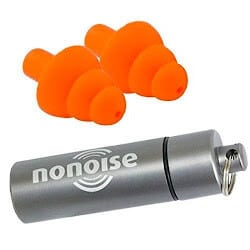
13. Not Every Day is a Good Day
Riding a motorcycle is a skill and not every day is a good day. Sometimes you’re going to have an off day, no matter how experienced you are. Learn to recognize when you’re having an off day, enjoy the ride, and remember you can always be perfect tomorrow.
14. Fitness Matters
Both your physical and mental health matters when riding a motorcycle. Being physically fit will help keep you alert and improve your concentration when riding. While improving your strength through resistance training will help you maintain better control over the bike and if you drop the bike, it will help when it comes to getting it back upright.
15. Don’t Ride When You’re Mad
Riding when you’re mad isn’t a good idea. When you’re mad, your acceleration becomes uneven and aggressive. Your braking is uneven. You are quick to become impatient and as a result, take unnecessary risks and are prone to misjudgment. The solution is not to ride when you’re angry or upset.
16. A Good Mechanic is Key
Never underestimate the importance of a good mechanic. It’s always best to leave the mechanical issues to the experts, especially if you have a regular mechanic who knows your bike. Ask around at the local motorcycle club to find a good one, if you haven’t got one.
17. Don’t Go for Cheap Tires
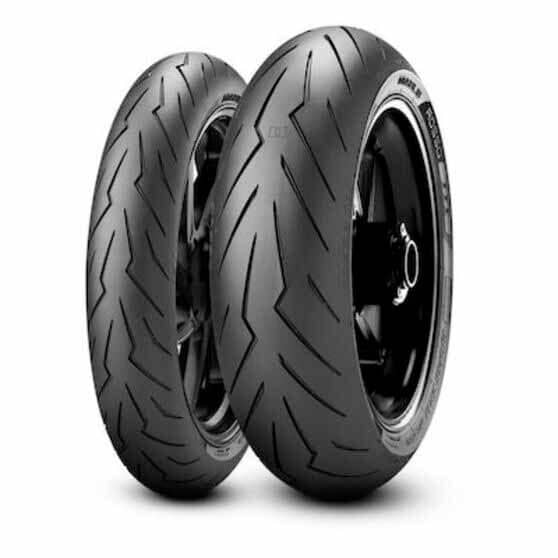
18. Learn to Brake Properly
Braking isn’t as straightforward as people think. It’s important to learn how to apply the back brake hard when coming to an emergency stop and how to go easy on the front brake to avoid going over the handlebars. As with most things, the key is practice.
Tips for When You’re Riding
When you’re out riding there are several ways to improve your control over the motorcycle and your riding experience. Here are some tips to put into practice when you’re riding:
1. Use Two Fingers on the Throttle
Try to use only one or two fingers to operate the clutch. It means that both hands maintain good control because both hands maintain a good grasp over the bars on the bike. It also helps to modulate the clutch as you ride around town. If you are having to use four fingers to operate the clutch, then consider some cable lube to lighten up your clutch. Although it can feel a little awkward at times, it’s a technique worth learning. One way to make it easier to use the clutch grip strength with two fingers is by working on your grip strength.
2. Practice Turning Left and Right in Circles
When riding a motorcycle, it’s often easier to turn left rather than right. This is because it’s easiest to push off the handlebars with your dominant hand. The brake lever is also on the right making it difficult to brake and putting your foot down when turning right. Practicing riding in circles * first clockwise then counterclockwise is a great way to get better at this. Once you have got the circles under control, try figure eights which have you alternate between right and left turns.
3. Practice Hard Braking
Go somewhere quiet and away from traffic, and practice hard braking so you have a feel for how the bike feels in this scenario. All different bikes feel different, so it’s important to know how your bike feels when you need to make an emergency stop.
4. Drag Your Back Brake in Traffic
When you are riding through traffic, it can be difficult to maintain control over the bike while avoiding getting the speed wobbles. Keeping minimum pressure on the back brake while navigating through traffic helps you to maintain control over the bike and avoid wobbles.
5. Forget the clutch for upshifts
Not using the clutch for upshifts results in faster upshifts and slightly lower clutch wear. It’s easy. As you begin to accelerate, apply slow upward pressure on the shift lever, quickly open the throttle while maintaining pressure on the shift lever and you will feel the gear click into place. It just takes a little practice.
6. Look Where You Want to Go
When riding look where you want to go as your bike and body will follow. It does take practice, but it will soon become second nature. The key is to look at the gap where you want to be.
7. Adjust the Clutch Friction Zone to Your Preference
As long as the clutch isn’t slipping or engaging and disengaging, the friction zone can be adjusted to the rider’s personal preference. It’s a case of experimenting within the range where the clutch is performing correctly then it’s a matter of finding your own personal preference.
8. Blip the Throttle to Make Downshifts Easier
When you move to a lower gear while braking, you run the risk of the back tire locking up due to engine compression, as your engine struggles to catch up with the tire’s rear speed. The affects the speed at which you can come into the corner due to your need to manage the decreased rear wheel speed. To overcome this, use a technique known as throttle blipping, where you blip the throttle to match the rear wheel speed. What this does is create a situation where the engine doesn’t have to catch up. The aim is to spike the revs to where they are closest to the lower gear.
9. Trail Brake for Faster, Safer Cornering
As you approach a corner use the front brake to slow down. This shifts the weight into the front tire and compresses the suspension. As a result, the tire has more of its surface area in contact with the ground which serves to increase the grip and enables you to steer quicker. Practice this away from the traffic. Start by braking later each time you approach a corner and notice the difference in control as you come out of the corner.
Once you have got to the point where you hit the apex of the corner at pace, let the front brake go and apply the throttle. The increased control, as a result, means that it’s safer because coming round a blind corner and into a hazard means that you have the ability to smoothly avoid the hazard.
10. Use Counter Steering
Steer left when you want to go right and vice versa. Although it sounds counterintuitive it’s remarkably simple and logical. If you sit on your bike and turn the handlebars left, the bike wants to fall toward the right because you are creating a point where the bike’s front wheel and the body of the bike are on opposite sides of the point created and the bike wants to fall toward that point. Likely, you’re doing this already, but it never hurts to practice in an environment outside of traffic before you practice on the road. Once you understand the technique, you’ll find yourself doing it without even thinking.
11. Use Your Knees
Try to keep your hands light when riding. To achieve this grip the fuel tank with your knees, which will keep the weight off your hands, especially when braking heavily. The effect is you have more control over the bike.
Riding Tips for Beginners
Beginning something new is never easy, so here are some tips for those that are new to motorcycling:
1. Keep Your Heels in
When you position your feet on the foot pegs, be sure to keep your heels in. This helps with bike control and stability.
2. Take Turns Outside-Inside-Outside
When riding a motorcycle, the general rule is to take turns on the outside, proceed through the turn on the inside, then exit the turn on the outside. The advantage is this technique allows you to look into the turn for hazards and danger. It also lessens the angle of your lean so that you can take the corner faster.
Related: What is the Best Motorcycle for a Beginner?
3. Looking Through the Turn
Look through the turn. This can be slightly awkward at first and can result in you almost having to exaggerate the head turn coming into a corner. If you have gotten into the bad habit of only looking in front of you it will take some time to get used to this practice, but once you master it, you will find the road opens up.
4. Keep Your Visor Closed
Keep your visor down. The amount of stuff that flies into your face when riding is significant and it only takes one foreign object or bug to the eye to cause a major distraction that can lead to an accident, so play it safe and always keep the visor down.
Information for this article was partially sourced and researched from the following authoritative Government, educational, corporate, and nonprofit organizations:
You and your motorcycle riding tips
Motorcycle safety: The rider and the gear
About the Author:
Michael Parrotte started his career in the motorcycle industry by importing AGV Helmets into the North American market. He was then appointed the Vice President of AGV Helmets America, total he worked with AGV Helmets for 25 years. In addition, he functioned as a consultant for KBC Helmets, Vemar Helmets, Suomy Helmets, Marushin Helmets, KYT Helmets, and Sparx Helmets.
In 1985, He is the Founder of AGV Sports Group, Inc. cooperation with AGV Helmets in Valenza Italy
Click here for LinkedIn Profile: https://www.linkedin.com/in/parrotte/
Click here for complete AGV Helmet & AGVSPORT History https://agvsport.com/michael-parrotte
Click here for all AGV Sports Group Social Media information http://agvsport.info/
FM/LY

